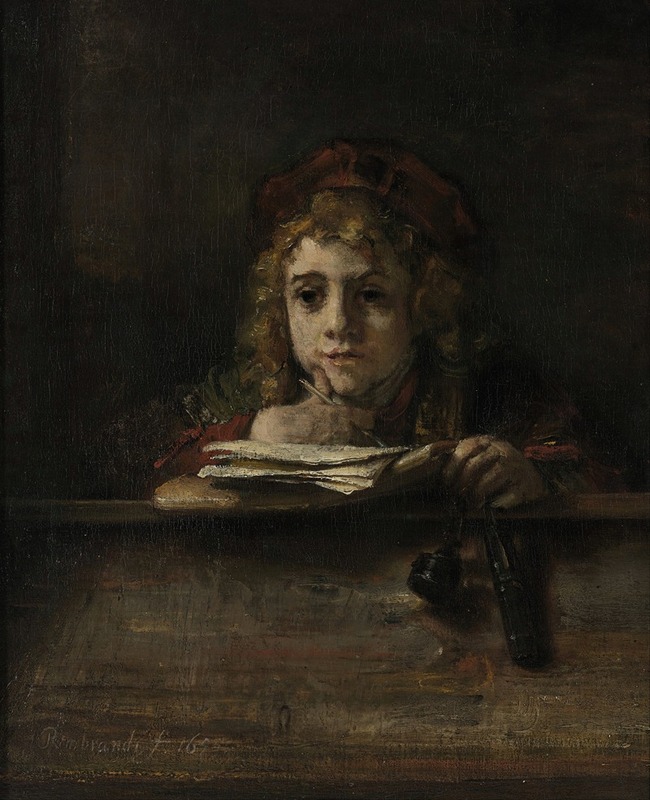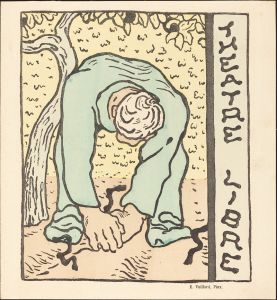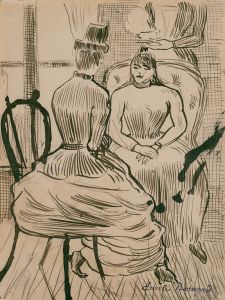
Titus at his desk
A hand-painted replica of Rembrandt van Rijn’s masterpiece Titus at his desk, meticulously crafted by professional artists to capture the true essence of the original. Each piece is created with museum-quality canvas and rare mineral pigments, carefully painted by experienced artists with delicate brushstrokes and rich, layered colors to perfectly recreate the texture of the original artwork. Unlike machine-printed reproductions, this hand-painted version brings the painting to life, infused with the artist’s emotions and skill in every stroke. Whether for personal collection or home decoration, it instantly elevates the artistic atmosphere of any space.
"Titus at his Desk" is a painting by the renowned Dutch artist Rembrandt van Rijn, created in 1655. This artwork is a portrait of Rembrandt's son, Titus van Rijn, who was born in 1641 to Rembrandt and his wife Saskia van Uylenburgh. The painting is a fine example of Rembrandt's skill in capturing the essence and character of his subjects, showcasing his mastery in the use of light and shadow, a technique known as chiaroscuro.
In "Titus at his Desk," Rembrandt depicts his son seated at a desk, engaged in writing or reading. The composition is intimate, focusing closely on Titus, who is portrayed with a thoughtful expression. The background is kept relatively dark, which serves to highlight Titus's face and hands, drawing the viewer's attention to his contemplative demeanor. This use of lighting not only emphasizes the subject but also creates a sense of depth and realism, characteristic of Rembrandt's portraiture.
The painting is executed in oil on canvas, a medium that Rembrandt frequently employed. The color palette is subdued, with warm earth tones predominating, which adds to the overall mood of introspection and calm. Rembrandt's brushwork is both precise and expressive, capturing the textures of Titus's clothing and the soft curls of his hair with remarkable detail.
Titus was the only one of Rembrandt's children to survive into adulthood, and he was a significant figure in the artist's life, especially following the death of Saskia in 1642. The bond between father and son is often reflected in Rembrandt's portraits of Titus, which convey a sense of affection and pride. "Titus at his Desk" is one of several portraits Rembrandt painted of his son, each offering a glimpse into their personal relationship and the artist's evolving style.
During the time this painting was created, Rembrandt was facing financial difficulties, partly due to his lavish lifestyle and the economic downturn in Amsterdam. Despite these challenges, his artistic output remained prolific, and his work continued to evolve, with a greater emphasis on psychological depth and emotional resonance.
"Titus at his Desk" is housed in the Rijksmuseum in Amsterdam, where it is part of a significant collection of Rembrandt's works. The painting is appreciated not only for its artistic merit but also for its insight into the personal life of one of history's greatest painters. It stands as a testament to Rembrandt's enduring legacy and his ability to convey the complexities of human emotion through portraiture.
Overall, "Titus at his Desk" exemplifies Rembrandt's unparalleled skill in portrait painting, his innovative use of light and shadow, and his deep personal connection to his subjects, making it a cherished piece in the canon of Western art.


















